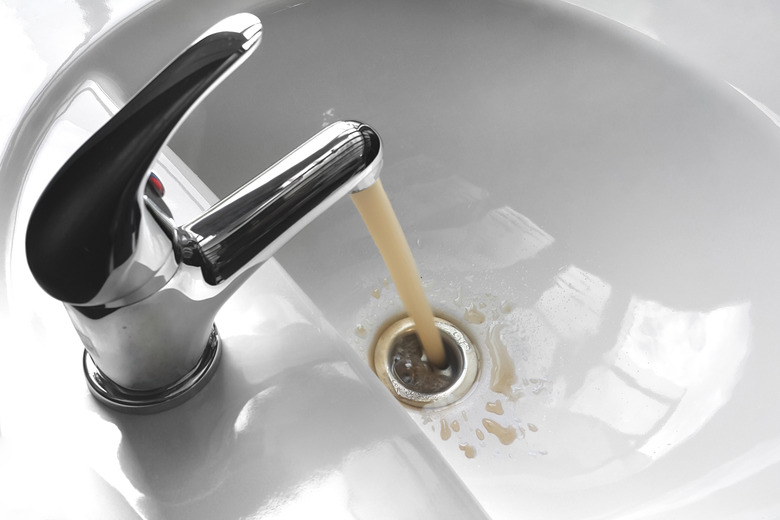Why Is My Well Water Suddenly Dirty?
We may receive a commission on purchases made from links.
The issue of dirty well water is an important one for rural households that rely on a well for drinking water. The appearance of the water usually provides a clue about the source of the contamination but not always. A brownish hue could indicate mineral contamination, but it could also indicate the presence of organic matter, which is more serious.
The vulnerability of a well to contamination by surface water is a function of its depth; shallow wells are more vulnerable than deep ones. There could also be environmental reasons you find dirt in your water, such as recent heavy rainfall and flooding. In some cases, discoloration is no cause for alarm and is relatively easy to address, but in others, you may have to sterilize the well, and in still others, mud in the well water could indicate your well is going dry.
Iron, Manganese, and Other Minerals
Iron, Manganese, and Other Minerals
One of the most common causes of discoloration of well water is the presence of iron and other minerals. As groundwater seeps through the bedrock, it can absorb these minerals, and although they don't present a health hazard, they give the water an unpleasant, metallic taste.
If your well water has a high mineral content, you've probably noticed discoloration for some time, and you may have installed a filter to keep the water clean. If you suddenly notice it for the first time, you may need a new filter, but the cause may also be in the plumbing. Corrosion in a galvanized pipe or fitting may have progressed to the point that it has begun actively releasing rust into the water. This is a problem for which you need a plumber to track down the source of the corrosion and replace the necessary pipes and fittings.
Contamination From Organic Matter
Contamination From Organic Matter
If your well is less than 50 feet deep, it could potentially be contaminated by runoff of surface water during a period of heavy rain. Wells must be separated from all components of a septic system by at least 100 feet, but even at that distance, a shallow well could be affected by a septic leak during an unusually catastrophic flood event.
This type of contamination is dangerous, and if you suspect it, you should stop using the well immediately, and you shouldn't use it until the ground has dried out, and you've decontaminated the well with chlorine bleach. The procedure is to pour a bleach solution into the well, run all plumbing fixtures in the house until you smell bleach coming from them, and then leave the plumbing undisturbed for 12 to 24 hours. After that, run each fixture until the bleach odor disappears.
Actual Mud in the Well Water
Actual Mud in the Well Water
Well pump systems have filters to remove sediment, but if these filters fail, you may notice dirt in the water. This is a warning to clean or replace the pump filters, which is a job for a well service professional. If you have a standalone sediment filter, it's also time to consider a well sediment filter replacement.
Muddy water from the tap is also a possible indication of a more serious problem: a low water level in the well caused by groundwater depletion. Suspect this if you've been experiencing a period of drought and neighbors are experiencing a similar problem. Reduce your water consumption to give the well more time to recharge. If that doesn't help, the only option may be to dig a deeper well.
